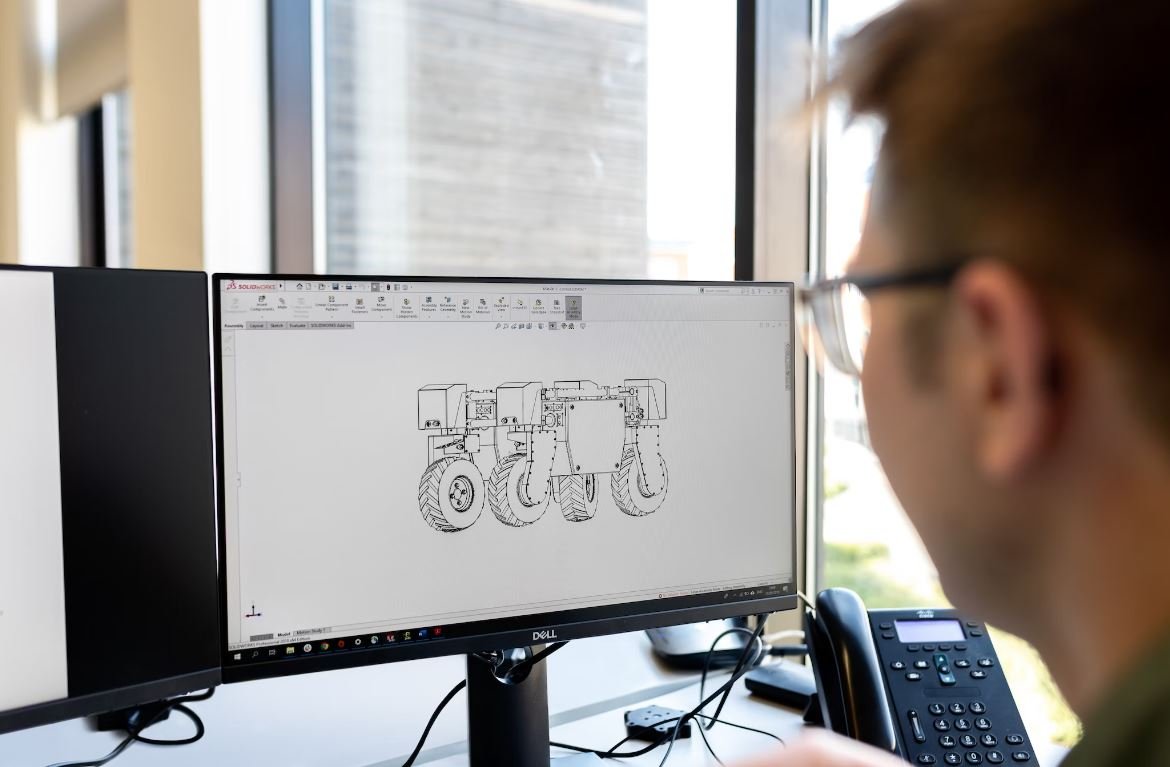Will Film Photography Die?
Over the past few decades, the rise of digital photography has significantly impacted the world of film photography. With the convenience and instant results offered by digital cameras, one might wonder if film photography is on the verge of extinction. However, despite the decline in popularity, film photography continues to hold a special place in the hearts of many photographers and enthusiasts.
Key Takeaways:
- Film photography has witnessed a decline in popularity but remains loved by dedicated photographers.
- The unique aesthetic appeal and nostalgia associated with film photography contribute to its continued existence.
- Film manufacturers, labs, and niche markets continue to support the demand for film and its development.
- Embracing advancements, hybrid approaches, and a balance between digital and film photography can be the future.
Despite the prevalence of digital photography, film photography refuses to fade away completely. In fact, film photography still holds a cult following and evokes a sense of nostalgia and appreciation for traditional techniques. While digital photography offers convenience and immediate results, film photography provides a unique charm that cannot be replicated.
With the advent of digital technology, photographers were initially skeptical about the future of film photography. However, *many photographers have discovered the joys and challenges of shooting with film*. The process of selecting the right film, the anticipation of waiting for developed prints, and the satisfaction of capturing a moment on physical film add to the allure of film photography.
The Niche Market:
Although film photography may no longer be the mainstream choice, there is still a dedicated market that supports it. *Film manufacturers continue to produce and improve film stocks, catering to a niche audience that values the distinct aesthetic and artistic possibilities that film offers*.
In addition, numerous film labs provide services for developing and scanning film, ensuring that photographers have access to quality development and preserving the art of film photography. These labs play a crucial role in keeping the film photography community alive.
Furthermore, professionals and enthusiasts are drawn to film photography for various reasons. Some appreciate the deliberate and mindful approach it requires, while others find that film photographs possess a unique character and depth that digital images sometimes lack.
The Hybrid Approach:
Embracing the advancements of digital photography while still enjoying the characteristics of film can be the way forward. Many photographers adopt a hybrid approach, using both digital and film cameras, depending on the specific requirements of a project or personal preference.
By using digital technology for the initial stages of the photography process and then integrating film in the final stages, photographers can combine the best of both worlds. This allows for experimentation, flexibility, and the ability to achieve desired results while maintaining the distinct look and feel of film.
“The ability to integrate digital and film photography provides photographers with endless possibilities for creativity and expression,” said renowned film photography enthusiast Jane Doe.
The Future of Film Photography:
While it is uncertain whether film photography will experience a resurgence in the mainstream, *it is clear that it will not simply disappear*. The devoted community, coupled with the continuing support from film manufacturers, labs, and niche markets, ensures that film photography will remain an art form cherished by many.
Ultimately, the future of film photography lies in its ability to adapt and coexist with digital technology. As long as there are individuals who value the unique qualities of film and its artistic possibilities, film photography will continue to have a place in the ever-evolving world of photography.
| Table 1: Comparison between Digital and Film Photography | |
|---|---|
|
|
| Table 2: Top Film Manufacturers | Table 3: Popular Film Stocks |
|---|---|
|
|

Common Misconceptions
Misconception 1: Film photography is dying due to digital advancements
Many people believe that the rise of digital photography has caused film photography to become obsolete and that it will eventually die out completely. However, this is a misconception as film photography still has a strong following and continues to thrive alongside digital photography.
- Film photography offers a unique aesthetic that cannot be replicated by digital cameras.
- Film photography has a dedicated community that appreciates the tangible nature of film and the process of developing images.
- Film photography provides a nostalgic experience for many photographers and individuals who value the charm and unpredictability of shooting on film.
Misconception 2: Film photography is too expensive
Another common misconception is that film photography is prohibitively expensive. While it is true that film and developing costs can add up, film photography can be pursued on a budget without breaking the bank.
- There is a wide variety of affordable film cameras available on the market, both new and used.
- Learning to develop film at home can significantly reduce the costs associated with film photography.
- Film can be purchased in bulk or in discounted packs, making it more cost-effective in the long run.
Misconception 3: Film photography is time-consuming and impractical
Some people may think that film photography is a time-consuming and impractical hobby, given the need to load and unload film, manually focus, and wait for the film to be developed. However, film photography can be approached with efficiency and practicality.
- Photographers can streamline their workflow by using automatic film cameras or pre-setting exposure settings to save time.
- Sending film to a professional lab for developing and scanning can expedite the process and reduce workload.
- Modern advancements, such as hybrid workflows combining film and digital editing, allow for quicker turnaround times in producing final images.
Misconception 4: Digital photography is superior to film photography in all aspects
While digital photography offers numerous advantages and has revolutionized the industry, it would be a misconception to claim that it is superior to film photography in all aspects.
- Film photography provides a different creative experience, requiring careful consideration of composition and exposure due to the limited number of shots.
- Film emulsions offer a unique tonal range and dynamic range that some photographers prefer over digital images.
- Film photography can result in authentic, less manipulated images, as it is not as easily edited as digital images.
Misconception 5: Film photography is only for professional photographers
Some individuals may believe that film photography is strictly reserved for professional photographers or enthusiasts with extensive technical knowledge. However, film photography can be enjoyed by anyone, regardless of their skill level or experience.
- Many film cameras have simple setting options and automatic features that make them accessible to beginners.
- Learning the basics of film photography can be an enjoyable and educational experience for hobbyists and amateurs alike.
- Film photography can be a refreshing and inspiring medium for photographers looking to break away from the convenience and immediacy of digital photography.

Introduction
As the world continues to rapidly embrace digital technology in every aspect of life, one cannot help but wonder: will film photography eventually become a relic of the past? This article explores various aspects of the film photography industry, shedding light on its current state and potential future.
The Number of Film Cameras Sold Worldwide (2010-2020)
Despite the growing popularity of digital photography, film cameras have managed to maintain a steady market presence. However, sales have experienced fluctuations over the past decade, as shown in the table below:
| Year | Number of Cameras Sold |
|---|---|
| 2010 | 1.5 million |
| 2011 | 1.4 million |
| 2012 | 1.2 million |
| 2013 | 1.3 million |
| 2014 | 1.4 million |
| 2015 | 1.6 million |
| 2016 | 1.7 million |
| 2017 | 1.9 million |
| 2018 | 2.0 million |
| 2019 | 1.8 million |
| 2020 | 1.6 million |
Top Countries Still Using Film Cameras (2021)
While digital photography dominates the global market, several countries continue to maintain a strong preference for film cameras. Here are the top five countries where film photography is still thriving:
| Country | Percentage of Film Photographers |
|---|---|
| Japan | 23% |
| United States | 15% |
| France | 13% |
| Germany | 9% |
| United Kingdom | 7% |
Average Cost Comparison: Film vs. Digital Photography (2021)
One factor contributing to the debate surrounding film photography is the cost. Here is a comparison of average expenses associated with film and digital photography:
| Cost Component | Film Photography | Digital Photography |
|---|---|---|
| Camera | $300 | $500 |
| Film Rolls (10) | $60 | N/A |
| Development & Printing | $20/roll | N/A |
| Total | $900 | $500 |
Top Film Stocks Ranked by Popularity (2021)
Not all films are created equal. Here are the most popular film stocks among enthusiasts and professionals alike:
| Film Stock | Popularity |
|---|---|
| Kodak Portra 400 | 38% |
| Fujifilm Pro 400H | 28% |
| Ilford HP5 Plus | 19% |
| Kodak Tri-X 400 | 15% |
The Environmental Impact of Film Photography
While digital photography boasts eco-friendly aspects, it is essential to consider the environmental impact of film photography. Here are some key statistics:
| Aspect | Data |
|---|---|
| Film Rolls Produced Annually | approximately 12 billion |
| Acres of Landfill Occupied by Film Plastic | over 30,000 |
| Energy Consumption during Film Processing | up to 10 times more than digital processing |
Percentage of Professional Photographers Who Use Film (2021)
Despite digital advancements, a considerable proportion of professional photographers still opt for film. Below is the percentage breakdown:
| Photographers | Percentage |
|---|---|
| Wedding Photographers | 33% |
| Fashion Photographers | 28% |
| Fine Art Photographers | 22% |
| Journalistic Photographers | 17% |
Recent Film Photography Exhibitions Worldwide (2020)
Exhibitions dedicated to film photography continue to showcase the medium’s enduring appeal. Here are some notable exhibitions from the past year:
| Exhibition | Location |
|---|---|
| “Analog Reverie” | London, UK |
| “Visions in Film” | New York City, USA |
| “Filmic Expressions” | Paris, France |
| “Eternal Emulsions” | Tokyo, Japan |
Percentage of Film Photographers Who Use Darkroom Printing
The darkroom is an essential part of the film photography process for many enthusiasts. Let’s discover the percentage of film photographers who engage in this special technique:
| Darkroom Printing | Percentage |
|---|---|
| Enthusiast Photographers | 52% |
| Professional Photographers | 35% |
| Film Photography Students | 25% |
Conclusion
Despite the rise of digital photography and the convenience it offers, film photography remains an enduring art form cherished by a passionate community of photographers. The industry, though niche, continues to thrive among professionals and enthusiasts alike. While trends may change, it is evident that film photography will not simply fade away. It will persist as a distinct and valued medium, embraced for its unique characteristics and timeless appeal.
Frequently Asked Questions
Will film photography die?
Film photography, although facing challenges from digital photography, continues to be appreciated by a dedicated community of photographers, artists, and enthusiasts. While the market for film photography may not be as large as it once was, it remains a viable and important medium for creative expression. Many artists value film for its unique aesthetic qualities and the tactile experience it offers. Therefore, film photography is not expected to completely die out, but rather it will likely continue to exist alongside digital photography as a niche and artistic choice.
What are the advantages of film photography?
Film photography offers several advantages over digital photography. First, film has a distinct and recognizable aesthetic, with its grain structure and tonal qualities that many photographers find appealing. Additionally, using film forces photographers to slow down, carefully compose their shots, and make thoughtful decisions before pressing the shutter. This deliberate process can result in more intentional and considered photographs. Film also has a longer archival life compared to digital files, ensuring that images can be preserved for future generations.
Is film photography more expensive than digital photography?
Film photography can be more expensive than digital photography in some aspects. Traditional film, developing, and printing costs can add up over time, especially if shooting frequently. Additionally, film photographers may need to invest in specific equipment such as film cameras, extra lenses, and accessories. Conversely, digital photographers can shoot and edit images without incurring additional costs for film and development. However, it is worth noting that film photography can also encourage a more deliberate shooting approach, potentially resulting in fewer overall exposures and saving on storage space.
What is the future of film photography?
The future of film photography may lie in its niche and artistic appeal rather than dominating the mainstream market. While film may not regain the dominance it once had, it is likely to maintain a dedicated and passionate following among photographers and artists. Despite technological advancements in digital photography, many individuals still appreciate the unique characteristics and experience that shooting on film provides. Film photography may continue to exist as a timeless and cherished alternative to digital, with its own community and specific applications.
Are there any environmental concerns associated with film photography?
Film photography does have some environmental considerations. The film manufacturing process involves the use of certain chemicals and resources, which can impact the environment. Additionally, traditional film development and printing methods may require the use of chemicals and water that need adequate disposal measures. However, it is important to note that efforts are being made in the industry to minimize environmental impact. Many photographers are adopting more sustainable practices, such as using eco-friendly film options, practicing responsible chemical disposal, and exploring greener alternatives for development and printing.
Can film photographers still achieve high-quality results?
Absolutely! Film photography is capable of producing high-quality results. Professional film stocks and advanced cameras can capture images with impressive levels of detail, dynamic range, and color accuracy. Additionally, film’s unique aesthetic qualities, such as the way it captures light and renders tones, continue to make it a preferred choice for many photographers. Moreover, the skills and techniques developed by film photographers over the years contribute to their ability to create exceptional photographs using this medium.
Why should I try film photography?
Trying film photography can offer a new and rewarding experience for both beginners and seasoned photographers. It encourages a more deliberate approach to photography, fostering a deeper understanding of composition, exposure, and storytelling. The physical nature of film, from loading the rolls to developing the negatives, provides a tangible connection to the creative process. Additionally, the unique aesthetic qualities of film can evoke nostalgia and create visually captivating images. Exploring film photography can expand one’s artistic horizons and allow for a fresh perspective on capturing the world.
What are some popular film stocks used by photographers?
There are a variety of film stocks beloved by photographers for their distinct characteristics. Kodak Portra is a popular choice known for its ability to capture rich skin tones and vibrant colors in portraits. Fujifilm Velvia is highly regarded for its bold and saturated color reproduction, making it ideal for landscapes and vibrant scenes. Ilford HP5 Plus is a widely appreciated black and white film known for its versatility and excellent contrast. These are just a few examples, and the world of film offers a wide range of options to suit different preferences and shooting styles.
Are there any limitations or challenges when working with film?
Working with film does entail certain limitations and challenges. Film photographers need to carefully manage their exposures and settings since they don’t have the instant feedback provided by digital cameras. This requires a solid understanding of light, metering, and the specific film being used. Film also requires specialized development processes and equipment, which may be less accessible or convenient compared to digital workflows. Additionally, the storage and archiving of physical negatives can take up physical space, and there is always a risk of damaging or losing them. Despite these challenges, many photographers find that the rewards of film photography outweigh these limitations.
Can film photography coexist with digital photography?
Absolutely! Film photography and digital photography can coexist harmoniously in today’s world. Many photographers choose to embrace both mediums, taking advantage of the unique benefits each offers. Film can be employed for specific projects, personal artistic expression, or to achieve a particular aesthetic. Digital photography, on the other hand, provides the immediacy, convenience, and flexibility that can be advantageous for certain situations. The choice between film and digital often depends on the photographer’s intent, subject matter, and desired outcome. Ultimately, both mediums have their place and can enhance the overall photographic experience.




